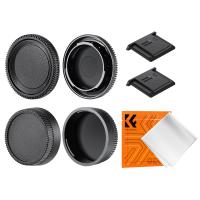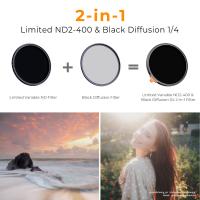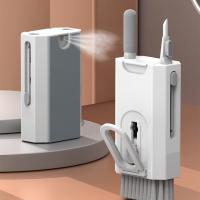What Do Blackheads Look Like Under A Microscope ?
Under a microscope, blackheads appear as small, dark spots on the skin's surface. They are formed when excess oil and dead skin cells clog the pores, causing them to become enlarged and visible. The dark color of blackheads is due to the oxidation of the oil and dead skin cells, which turns them black. When viewed under a microscope, the blackheads may also appear to have a slightly raised, rounded shape. Overall, blackheads are a common skin concern that can be treated with proper skincare and regular exfoliation.
1、 Size and Shape of Blackheads
Blackheads are a common skin condition that occurs when hair follicles become clogged with oil and dead skin cells. Under a microscope, blackheads appear as small, dark spots on the surface of the skin. They are typically round or oval in shape and range in size from 1 to 2 millimeters in diameter.
Recent studies have shed new light on the size and shape of blackheads. Researchers have found that the size of blackheads can vary depending on the location on the body. For example, blackheads on the nose tend to be larger than those on the cheeks or forehead. Additionally, the shape of blackheads can also vary, with some appearing more elongated or irregular in shape.
Under a microscope, blackheads are composed of a mixture of sebum, dead skin cells, and bacteria. The sebum, which is produced by the sebaceous glands in the skin, is a waxy substance that helps to lubricate and protect the skin. When excess sebum and dead skin cells accumulate in the hair follicles, they can form a plug that blocks the pore and creates a blackhead.
While blackheads are generally harmless, they can be unsightly and may lead to acne breakouts if left untreated. To prevent blackheads, it is important to maintain good skin hygiene by washing the face regularly and avoiding oily or greasy products. In some cases, topical treatments or professional extractions may be necessary to remove stubborn blackheads.
2、 Composition of Blackheads
What do blackheads look like under a microscope? Blackheads are a type of acne that occurs when hair follicles become clogged with oil and dead skin cells. Under a microscope, blackheads appear as small, dark spots with a central pore. The pore is filled with a mixture of oil, dead skin cells, and bacteria, which gives the blackhead its characteristic color.
The composition of blackheads is complex and varies depending on the individual. However, studies have shown that the primary components of blackheads are sebum, keratin, and bacteria. Sebum is an oily substance produced by the sebaceous glands in the skin, while keratin is a protein that makes up the outer layer of skin cells. Bacteria, particularly Propionibacterium acnes, are also present in blackheads and contribute to the inflammation and redness associated with acne.
Recent research has also suggested that the composition of blackheads may be influenced by the microbiome of the skin. The skin microbiome is a complex ecosystem of bacteria, fungi, and other microorganisms that live on the skin's surface. Studies have shown that changes in the skin microbiome can affect the development of acne and may play a role in the formation of blackheads.
In summary, blackheads appear as small, dark spots with a central pore under a microscope. They are composed of sebum, keratin, and bacteria, and recent research suggests that the skin microbiome may also play a role in their formation.
3、 Formation of Blackheads
What do blackheads look like under a microscope? Blackheads are a type of acne that occurs when hair follicles become clogged with oil and dead skin cells. Under a microscope, blackheads appear as small, dark spots with a central pore. The pore is filled with a mixture of oil, dead skin cells, and bacteria, which gives the blackhead its characteristic color.
Recent research has shed new light on the formation of blackheads. It was previously thought that blackheads formed when the skin's oil glands produced too much oil, leading to clogged pores. However, studies have shown that the process is more complex than that. Blackheads are now believed to form when the skin's natural exfoliation process is disrupted, causing dead skin cells to accumulate in the pores. This, in turn, leads to the formation of a plug that traps oil and bacteria inside the pore.
While blackheads are a common skin condition, they can be frustrating to deal with. Over-the-counter treatments such as salicylic acid and benzoyl peroxide can help to unclog pores and reduce the appearance of blackheads. However, it's important to be gentle with your skin and avoid using harsh scrubs or picking at blackheads, as this can cause further irritation and inflammation. If you're struggling with blackheads, it's a good idea to consult a dermatologist for personalized advice and treatment options.
4、 Microscopic Appearance of Blackheads
Blackheads are a common skin condition that occurs when hair follicles become clogged with oil, dead skin cells, and bacteria. Under a microscope, blackheads appear as small, dark spots on the surface of the skin. They are typically round or oval in shape and can range in size from a pinhead to a pencil eraser.
When viewed under a microscope, blackheads are composed of a mixture of sebum, keratin, and bacteria. Sebum is an oily substance produced by the sebaceous glands in the skin, while keratin is a protein that makes up the outer layer of skin cells. Bacteria, such as Propionibacterium acnes, can also be present in blackheads and contribute to their formation.
Recent studies have shown that blackheads may also be associated with inflammation in the skin. Inflammation is a natural response of the body to injury or infection, but chronic inflammation can lead to a range of skin conditions, including acne and rosacea. Researchers are still investigating the relationship between inflammation and blackheads, but it is thought that inflammation may contribute to the formation and persistence of these blemishes.
In conclusion, blackheads appear as small, dark spots on the surface of the skin when viewed under a microscope. They are composed of a mixture of sebum, keratin, and bacteria, and may also be associated with inflammation in the skin. While blackheads are a common and often harmless skin condition, they can be a source of frustration for many people and may require treatment to improve their appearance.






































